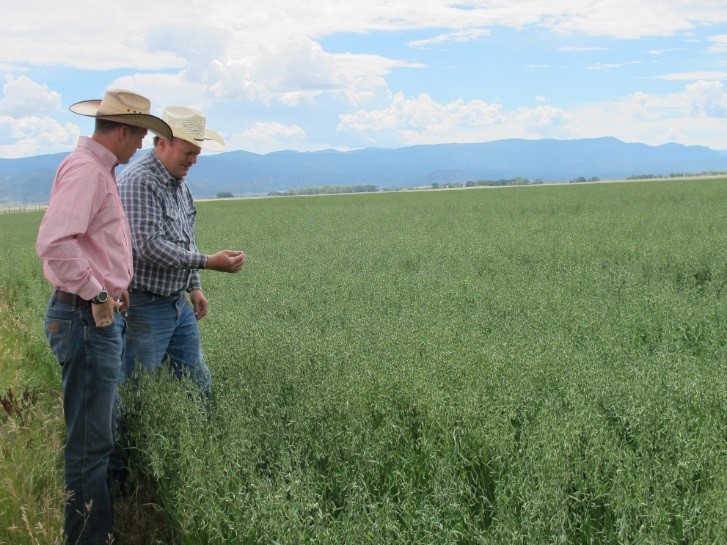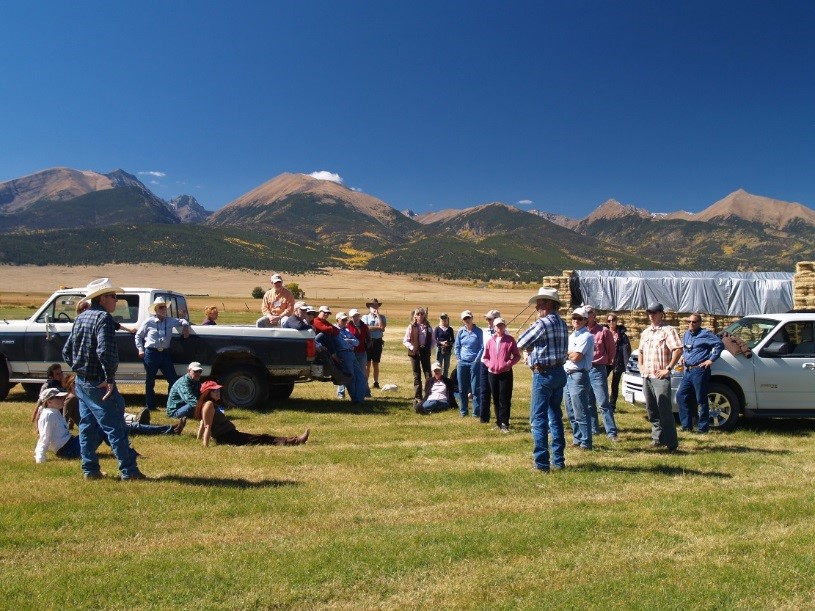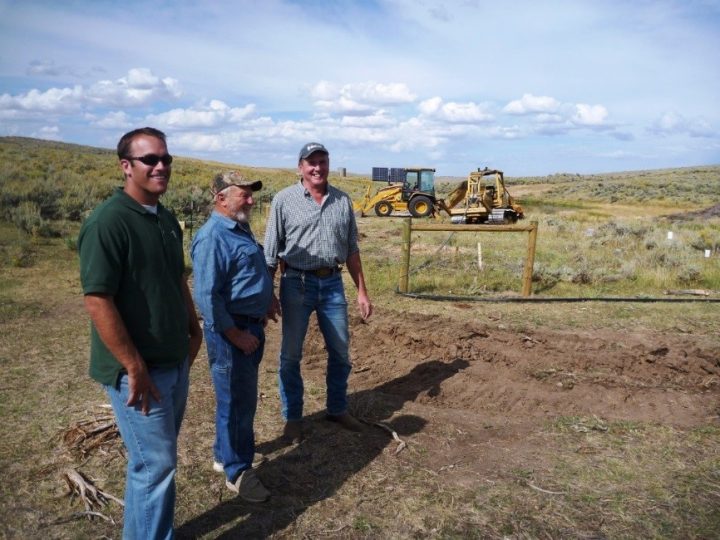Colorado Cattlemen’s Agricultural Land Trust
For the Benefit of Bird Habitat: Working with Local Ranchers in Colorado
Erik L. Glenn, Executive Director, Colorado Cattlemen’s Agricultural Land Trust and Tammy VerCauteren, Executive Director, Bird Conservancy of the Rockies
Note: This story was originally published in North American Bird Conservation Initiative’s (NABCI) Winter 2016 issue of The All-Bird Bulletin, titled Developing Partnerships with Land Trusts for Bird Conservation and has been adapted for this website.
Spotlight Resource: Partnership with a Local Bird Conservation Organization
The Colorado Cattlemen’s Agricultural Land Trust (CCALT) was founded in 1995 by the membership of the Colorado Cattlemen’s Association to serve as a local conservation option for Colorado’s ranching families. Since its founding, CCALT has partnered with 240 families to permanently conserve more than 450,000 acres of productive agricultural land, wildlife habitat, and open space throughout Colorado.
Bird Conservancy of the Rockies (formerly Rocky Mountain Bird Observatory) has been working to conserve birds and their habitats through science, education, and land stewardship since 1988. Bird Conservancy works closely with partners—including landowners—to identify and carry out conservation solutions. It has a network of biologists and rangeland ecologists who provide information on wildlife habitat, conservation opportunities, and financial assistance for habitat enhancement and protection. To date it has enhanced more than 700,000 acres in Colorado, Wyoming, Nebraska, and Mexico for the benefit of grassland, aridland, and wetland bird species as well as other wildlife, including native fish, while also enhancing the bottom line for agricultural production.

For more than a decade, CCALT and Bird Conservancy have worked together to advance conservation efforts that benefit birds and their habitat. Collaboration between the two organizations has included partnering on landowner workshops and providing support for grant proposals. As Bird Conservancy of the Rockies is not a land holding organization, partnering with CCALT—and having them share their knowledge and resources with landowners regarding conservation easements—has helped provide a broader conservation toolbox for landowners to draw from. As landowners get involved in conservation practices on their land, they want to learn and do more for longer term conservation solutions. This is where partnering with CCALT helps move them further along in the conservation and protection spectrum.
Finding Funding
CCALT has secured several grants from state lottery dollars to protect land and Bird Conservancy has provided letters of support that capture the bird conservation values of these easements. Using its monitoring data, and the Partners in Flight Species Assessment Database and Colorado State Wildlife Action Plan, the Bird Conservancy communicates what priority species will benefit from the land being enrolled in a conservation easement, which helps in its ranking for funding. As with any natural resource conservation opportunity, collaboration amongst individuals and organizations is key to developing successful solutions.
What’s Next?

Looking to the future, CCALT and Bird Conservancy of the Rockies are eager to expand their partnership for the benefit of both organizations and their respective stakeholders, and to improve the overall efficiency of delivering “on the ground” conservation throughout Colorado. For example, Bird Conservancy’s stewardship staff plans to collaborate with CCALT staff in working with landowners to conserve their properties. As CCALT engages landowners in conversations regarding conservation easements, the two organizations will collaborate as needed to tap each other’s organizational expertise to help inform, monitor, develop, and implement conservation plans. Where appropriate the Bird Conservancy’s biologists and rangeland ecologists will enhance the conservation values of lands put under easement through habitat improvements funded by the Farm Bill and other conservation programs.
As an example, some ranches that enroll into conservation easements may benefit from alternate grazing practices, development of alternate water sources, fence marking, or native seed plantings. Staff biologists will develop a conservation plan and use Farm Bill and other partner funds to financially support these habitat improvement projects thus further enhancing the conservation values of the easement with benefits to both the producer and wildlife.
CCALT also plans to partner with Bird Conservancy on training programs. For instance, Bird Conservancy staff will train CCALT staff to better utilize the Rocky Mountain Avian Data Center, which is part of the Avian Knowledge Network, to improve their access to and understanding of bird information. Both organizations believe that these trainings will help improve success on National Fish and Wildlife Foundation and Great Outdoors Colorado grants, as proposals will be better linked to state and regional conservation plans and better quantify expected bird and other wildlife outcomes of land conservation and protection efforts. This will also help projects developed for Farm Bill funding score more competitively.

They look forward to joint fundraising and conservation initiatives, including collaborative proposals to the Migratory Bird Joint Ventures and Natural Resources Conservation Service’s Regional Conservation Partnership Program, that combine their expertise in conservation planning, habitat enhancement, and land protection. The results will be more funded projects with even better private land conservation and protection strategies.
Bird Conservancy of the Rockies has been a catalyst in starting the conservation conversation with producers throughout Colorado, and CCALT has an outstanding reputation for working with landowners to conserve lands that have significant benefits for wildlife. These two organizations demonstrate that together a land trust and a bird conservation organization can help landowners keep doing what they do best—managing land—and keep the habitat and wildlife flourishing for generations to come.


